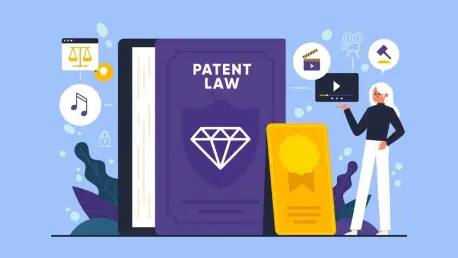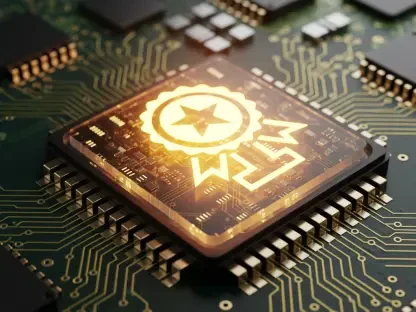The trucking technology industry stands at a critical juncture, where innovation can make or break a company’s position in a fiercely competitive market, and every new feature in fleet management software or dashcam technology could trigger a multimillion-dollar lawsuit. Imagine a sector where companies scramble to protect their intellectual property in a high-stakes environment, as exemplified by Motive Technologies’ recent significant legal victory against competitor Samsara at the U.S. International Trade Commission (ITC). This ruling not only shapes Motive’s trajectory but also highlights the broader tensions driving technological advancement in logistics and fleet safety solutions.
Overview of the Trucking Technology Industry
The trucking technology sector is experiencing unprecedented growth, fueled by the increasing demand for efficient logistics and streamlined fleet management. With global supply chains becoming more complex, technologies such as telematics, real-time tracking, and AI-driven analytics have become indispensable tools for optimizing operations. This rapid expansion has positioned the industry as a cornerstone of modern commerce, with billions of dollars invested annually in research and development to enhance safety and productivity.
Key segments like telematics, fleet safety solutions, and AI-powered systems dominate the landscape, with major players including Motive and Samsara leading the charge. These companies offer integrated platforms that provide everything from driver behavior monitoring to fuel efficiency insights. However, the competitive nature of this space often results in overlapping innovations, sparking disputes over who owns the rights to groundbreaking features and systems.
Intellectual property has emerged as a battleground, with companies fiercely guarding their patents to maintain market dominance. The drive for innovation, while essential for progress, frequently leads to legal confrontations as firms accuse each other of infringement. This contentious atmosphere underscores the importance of legal frameworks in determining how technology evolves and who ultimately benefits from these advancements.
Details of the ITC Ruling in Motive’s Favor
Key Findings of the ITC Decision
On September 8, a pivotal ruling by Administrative Law Judge Doris Johnson Hines at the ITC determined that Motive did not infringe on any valid patents held by Samsara. This decision came as a significant blow to Samsara, as the judge invalidated eight out of nine patent claims presented in the case. The finding highlighted gaps in the legitimacy of Samsara’s intellectual property assertions, casting doubt on the strength of their legal stance.
Additionally, the ruling pointed out Samsara’s failure to demonstrate sufficient domestic industry investment tied to the patents in question. Under Section 337 of the Tariff Act, such investment is a critical requirement for pursuing trade violation claims at the ITC. This shortfall further weakened Samsara’s position, resulting in a comprehensive legal setback that favored Motive’s defense.
Implications for Motive’s Operations
This legal victory ensures that Motive faces no immediate trade violation orders, allowing the company to continue marketing its innovative products without interruption. Solutions such as AI-powered dashcams and integrated operations platforms remain unaffected, preserving Motive’s ability to serve diverse industries like trucking, construction, and energy. This outcome is a crucial win for maintaining business continuity in a highly competitive market.
Beyond operational stability, the ruling bolsters Motive’s standing within the industry by affirming the legitimacy of its technological developments. It sends a clear message to competitors and customers alike that Motive’s innovations are independently created, enhancing trust in the brand. This strengthened market position could pave the way for further expansion and investment in cutting-edge solutions.
Ongoing Legal Challenges and Rivalry with Samsara
The ITC decision does not mark the end of legal tensions between Motive and Samsara, as a separate federal lawsuit filed in Delaware in 2024 remains active. This broader case encompasses allegations beyond patent infringement, including claims of fraud, false advertising, and unfair competition. These accusations suggest a deeper rivalry, where business practices and market ethics are under scrutiny alongside technological disputes.
Samsara, undeterred by the ITC setback, has expressed a firm commitment to protecting its intellectual property through continued legal action. The company views these lawsuits as essential for safeguarding decades of investment in fleet safety and telematics innovations. Despite the preliminary nature of the ITC ruling, which is subject to review by the full commission, Samsara’s determination to pursue multiple legal avenues signals an ongoing battle for market supremacy.
This multifaceted conflict illustrates the complexity of disputes in the trucking technology sector, where patent issues are often just the tip of the iceberg. Allegations of unethical competitive behavior add layers of contention, making resolution more challenging. As these legal proceedings unfold, they will likely influence not only the relationship between the two companies but also the industry’s perception of fair play and innovation.
Broader Context of Intellectual Property Disputes in the Industry
Motive’s legal entanglements extend beyond Samsara, reflecting a pattern of intense scrutiny from various competitors within the trucking technology space. Earlier this year, Motive secured another victory in federal court against Omnitracs, a subsidiary of Solera, along with its partners. That ruling cleared Motive of patent infringement claims and invalidated several of Omnitracs’ patents, reinforcing the narrative of Motive’s independent innovation.
These recurring disputes underscore the high stakes associated with technological advancement in fleet safety and management solutions. Competitors often claim substantial financial losses due to alleged intellectual property theft, arguing that their extensive investments are at risk. Such conflicts highlight the delicate balance between fostering innovation and protecting proprietary developments in a sector driven by rapid change.
Interestingly, consistent legal rulings in Motive’s favor suggest a growing recognition of the company’s legitimate approach to technology development. Courts and commissions appear to validate Motive’s claims of independent creation, reducing the threat of operational disruptions. This trend could set a precedent for how intellectual property cases are adjudicated in the industry, potentially influencing future litigation strategies among competitors.
Future Outlook for Motive and the Trucking Technology Sector
Looking ahead, the unresolved Delaware lawsuit with Samsara poses a lingering challenge for Motive, with potential implications for its reputation and operations. Should the case escalate or result in unfavorable rulings, Motive may face financial penalties or restrictions that could hinder growth. However, the company’s track record of legal successes provides a buffer against immediate concerns, offering a degree of confidence as the litigation progresses.
Emerging trends in AI and telematics are set to redefine the trucking technology landscape over the next few years, from 2025 to 2027, with innovations likely to intensify competition. Legal battles over intellectual property could either stifle or accelerate these advancements, depending on how courts balance protection with progress. Companies that navigate these disputes effectively may gain a significant edge in shaping industry standards.
Market competition and consumer demand will continue to drive the sector forward, pushing firms to innovate despite legal hurdles. As fleets increasingly prioritize safety and efficiency, the pressure to deliver cutting-edge solutions will remain paramount. How Motive and its rivals adapt to these dynamics, while managing intellectual property conflicts, will be critical to determining long-term success in this evolving field.
Conclusion and Industry Implications
Reflecting on the events that transpired, Motive’s legal victories at the ITC and in federal court against Omnitracs marked a defining moment, solidifying its reputation as a credible innovator in the trucking technology industry. These outcomes provided a much-needed reprieve from the threat of trade restrictions and patent disputes, affirming the integrity of Motive’s product development processes. Yet, the persistent litigation with Samsara served as a reminder of the unresolved tensions that continued to challenge the company’s path forward.
Moving into the future, stakeholders in this sector should prioritize establishing clearer guidelines for intellectual property protection to minimize disruptive lawsuits. Collaborative efforts between industry leaders and regulatory bodies could help create frameworks that encourage innovation while safeguarding investments. Additionally, companies like Motive might benefit from proactive transparency in their development practices to preempt legal challenges and foster trust among competitors and customers alike.
Ultimately, the journey ahead for the trucking technology industry hinges on finding equilibrium between competitive rivalry and cooperative progress. By focusing on shared goals such as enhancing fleet safety and operational efficiency, firms could mitigate the adversarial nature of intellectual property disputes. This approach would not only benefit individual companies but also ensure sustained growth and innovation across the entire sector, paving the way for a more stable and prosperous future.









